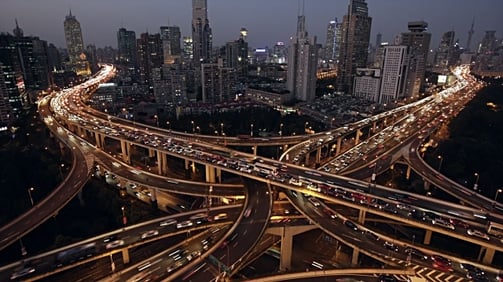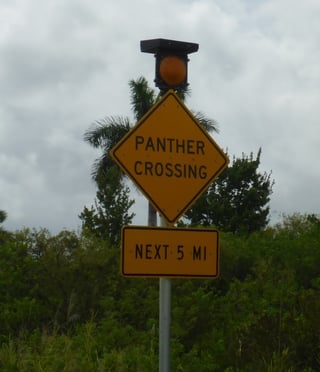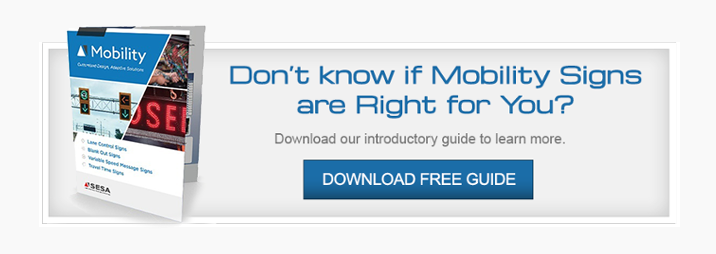
6 Criteria To Decide if a LED Blank Out Sign Works For Your ITS Application

Defining the right type of sign for a specific project can be challenging. There are many different reasons and criteria that effect the choice of one product versus another. Designing a Variable Message Sign to solve a road safety challenge requires a thorough process and defined methodology - it is important to ask the right questions.
On one side, choosing the most advanced sign that can display anything, in any color, at any time is the easiest and most unlimited option. However, this often creates other challenges like power issues, monitoring complexity, and exorbitant costs for simple applications.
On the other side, very simple and cheap solutions exists, such as static signs with flashing beacons. Although, this can also have many disadvantages and does not solve most of the problems discussed in one of our previous blogs.
Three Families of Road Safety Signs
Road safety signs can de divided into three main families with the following characteristics:
Dynamic Message Signs:
- Versatile
- Unlimited display
- Require more power
- Require advance and complex monitoring software
- Expensive
Blank Out Signs:
- Versatile
- Limited number of messages can be displayed
- Require low power, capable of solar power
- Simple or no monitoring software required
- Affordable

Static Sign with Flashing Beacons:
- Very limited messages and warning efficiency
- Very low power, capable of solar power
- No software available on the market, no remote monitoring
- Low quality
A good LED Blank Out Sign system is often the best intermediate option between cheap, low quality static signs with a beacon, and expensive Dynamic Message Signs. Blank Out Signs can offer multiple advantages and benefits, however the product must be carefully selected and designed.

6 Questions to Decide if Blank Out Signs are the Right Solution
If more than 4 messages or symbols you must choose Dynamic Message Signs
If only one message is needed, consider a Static Sign with flashing beacons especially when on a limited budget. Pay attention to the issues often encountered by this solution. For more information on this matter, read our blog on how Blank Out Signs can replace MUTCD traffic signs with flashers.
2- What size do I need?
Follow MUTCD recommendations to choose the right font size of the display, for example 12” or 18” characters, depending on the criteria. Define what you want to display first, it will determine the overall dimensions of your sign.
Most people believe that LED Blank Out Signs are necessarily small signs, no bigger than 36” x 36”. SESA Blank Out Signs can be as large as 20 feet long x 8 feet high like that of a large Dynamic Message Sign. They are built to match NEMA TS4 and other highway requirements.
Whatever the size, there is a Blank Out Sign solution.
3- What kind of monitoring system do I require?
Evaluate if you want to control and monitor the sign on a real time basis and if you want to change messages regularly. If this is the case, you need a remote computer system equipped with monitoring software, a communication network to dialog between the sign and a computer system. You may also want to consider simply connecting the sign to a sensor such as an over height or over weight vehicle sensor. The sign will automatically turn ON when required, with no control necessary.
Most Blank Out Signs are not designed to be remotely controlled. Instead, they are designed to be connected to a local controller, like a traffic controller. SESA Blank Out Signs have the ability to be connected to an NTCIP controller, a regular traffic controller, or to a remote control system. We also offer unique, easy to use monitoring software.
A full color Dynamic Message Sign requires a grid connection; no solar power option is currently available on the market for full color DMS. So, if you do not want to install an expensive power supply you would have to choose between an SESA SolarSign which displays amber messages only, or a Blank Out Sign which can display any color messages. Most Blank Out Signs can be solar powered, leaving you with the most cost effective solution in long term.
If you need a limited number of messages and those messages or symbols are triggered by sensors, a Blank Out Sign is the best solution.
The sign will be activated only when needed and messages will be posted without delay. Energy needs will be reduced significantly because the sign will consume electricity only when needed. Large Blank Out Signs are possible near or at weigh stations, tunnel entrances, approaching ramps, or even on highway overhead structures.
6 - Will the sign be connected to a Traffic Controller?
In some circumstances, the sign needs to be installed along side pole mounted traffic signals and overhead supports. It will be connected to a standard Traffic Controller to display MUTCD symbols like No Left Turn or No Entry messages. In that case, the best choice is a Blank Out Sign because it is easy to connect to a traffic controller, is small in size, and meets MUTCD requirements.
The Best ITS Applications for Blank Out Signs
After answering the six questions listed above, you can now understand how Blank Out Signs have the capability to display up to four different messages or symbols, are available in a variety of sizes, can be controlled remotely by an NTCIP system or software, can be solar powered, and are much more cost-effective than a Dynamic Message Sign - all while being more efficient that a static MUTCD sign with flashing beacons.
Here are some of the ITS applications Blank Out Signs work best for:
- Intersections: when connected to a traffic controller to display MUTCD symbols like "No Left Turn" or "No Right Turn"
- Traffic Calming Solutions: connected to vehicle detection systems or speed systems to display warning alerts such as “Dangerous Curve/Slow Down,” “Heavy Wind / Stay Alert,” "Too Fast / Slow Down,” or “Prepare to Stop”
- Weigh Station: displaying OPEN/CLOSED indications or instructions to heavy trucks like “Truck Must Enter Weigh Station” or “Truck By-Pass Weigh Station”
- Over Height Detection: sign is connected to an over height detection sensor and will display warning messages like “Over Height Vehicle / Next Exit”
- Tunnel Management: displaying specific messages like “Tunnel Closed to Hazardous Vehicle” or “Tunnel Open/Closed”
- Flood Warning: connected to different sensors to display different messages based upon the water level on the road. For example “Water Ahead/Slow down” or “Road Closed/Flood”
- Dust Warning: when connected to a dust sensor, a Blank Out Sign can display warning messages when a dust storm is approaching
- Railroad crossing: installation ahead of railroads can improve road safety and reduce the number of accidents; messages will be activated only when a train approaches the crossing
- Toll Plaza, Tunnel Entrances, Ferry Terminals, and many more....
Conclusion:
The answers to a few simple and easy questions can help define the right type of sign. In most cases, if you have a limited number of message to display a Blank Out Sign is the most economical and efficient solution for many applications.
SESA offers free consultation and design, no matter the project size.



